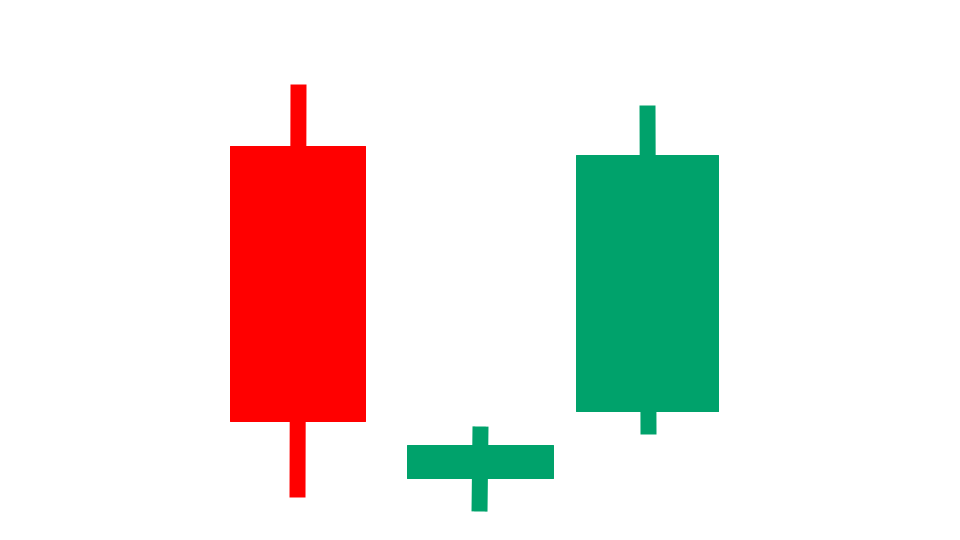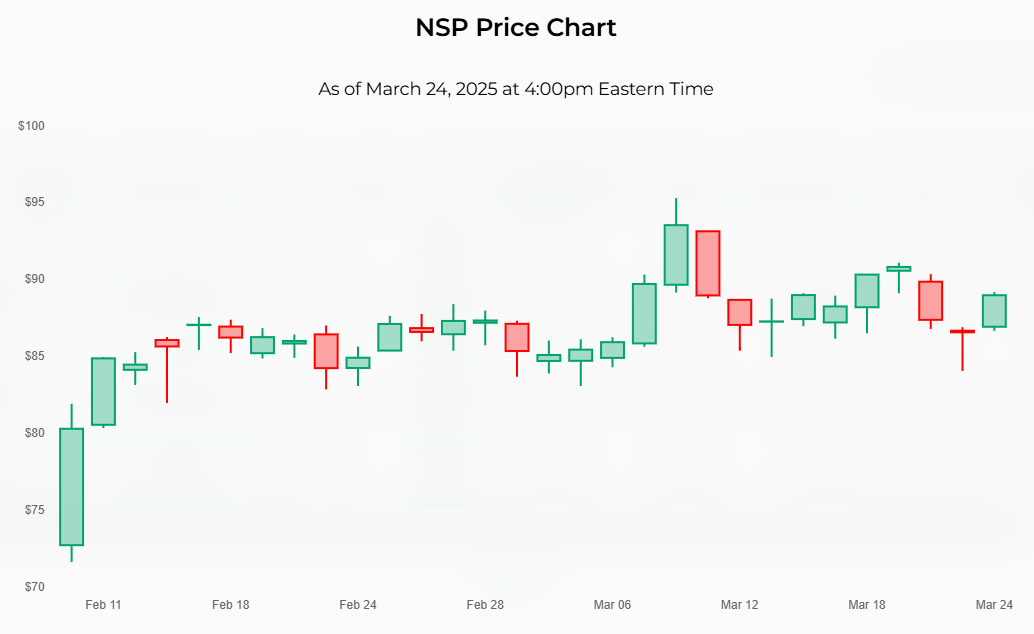Morning Star Candlestick Pattern - How It Works and How Traders Can Use It
Stock Market Guides is not a financial advisor. Our content is strictly educational and should not be considered financial advice.
When it comes to the stock market, sometimes you might hear the term "morning star pattern" mentioned. It refers to a type of stock chart candlestick pattern that is popular among active stock traders.
This article will explain what a morning star candlestick pattern is and how traders might be able to benefit from using it.
What Exactly Is a Morning Star Candlestick Pattern?
A morning star pattern is a type of price candlestick pattern found on a stock chart.
Stock charts show how a stock's price has changed over time, and that price activity can be conveyed in different ways. One of those ways is with price candlesticks, or price candles, which are also sometimes referred to as price bars.
Each price candle represents a pre-specified period of time, such as one day or one hour. Candles give information that might be pertinent to an investor, including the open price, close price, high price, and low price of the period.
A morning star candlestick pattern consists of three candles:
- First candle - The first candle is typically a long red candle, indicating selling pressure where the closing price is lower than the opening price.
- Second candle - This candle is typically relatively short and can be either red or green. Its body is small compared to the first candle, and it often gaps down from the close of the first candle. This candle reflects indecision in the market and sometimes takes the form of a doji candle.
- Third candle - The third candle typically has a long green body and opens at or below the midpoint of the second candle’s body.

That image is a graphical icon that gives an idea visually of what a morning star pattern looks like.
You can see that the first candle is red and tall. The third candle is green and tall.
The second candle is a small candle that is near or below the bottom of the first candle. It doesn't have a tall body, which reflects a lack of strong conviction from buyers or sellers.
Stock Market Guides

Stock Market Guides identifies swing trading opportunities that have a historical track record of profitability in backtests.
Average Annualized Return
79.4%
What Does a Morning Star Candlestick Pattern Look Like On A Stock Chart?
The image below is an example of a morning star pattern as shown on one of our stock charts.
The morning star pattern is shown in the three candles at the very far right of the stock chart.
You can see the first candle is a tall red candle. The second candle is a red doji candle that opened beneath the first candle. The third candle is a tall green candle.
How Do Traders Use a Morning Star Candlestick Pattern?
A morning star pattern suggests that there was downward selling pressure during the initial candle, and even a gap down thereafter.
By the second candle, though, buying and selling pressure had shifted. A doji-like candle suggests indecision and neutrality between buyers and sellers.
The third candle, which is green, suggests strong buying sentiment and upward price momentum.
As a result, a morning star might indicate a potential reversal of a downtrend or a slowing down of downward momentum.
If the stock has been in a downtrend, and then a morning star candlestick pattern appears, a trader could try to capitalize by buying the stock.
Is a Morning Star Pattern Bullish or Bearish?
Morning star patterns are considered bullish, meaning that the presence of a morning star pattern on a stock chart might be an indication that the stock price is on the verge of going up.
That level of bullish sentiment might be more pronounced if the morning star pattern occurs after a downtrend, as the pattern is commonly seen as a reversal signal.
How Do You Find Stocks That Have Morning Star Candlestick Patterns?
You can find them by using our Morning Star Pattern scanner. It's a free tool we offer here at Stock Market Guides. It uses our proprietary scanning technology to find stocks that just had a morning star candlestick pattern on a daily chart.
Here's how the scanner results look:
That tool ensures that you don't have to waste time flipping through stock charts manually to find stocks with a morning star candle pattern.
Example of a Morning Star Pattern Trading Strategy
For this example of a morning star pattern trading strategy, we're going to use a daily chart, where each price candle represents one day of price activity. That means it would be a swing trading strategy where the trade is designed to last more than one day but not for the long haul.
Entry for the Morning Star Pattern Trading Strategy
The entry for this Morning Star Pattern trading strategy will be as follows:
The entry criterion for our Morning Star Pattern trading strategy is very simple.
Exit for the Morning Star Pattern Trading Strategy
There are a lot of possibilities here for the exit.
For any given trading strategy, it can be helpful to define three different criteria for the exit: profit target, stop loss, and time limit.
Not everyone uses all three, and that's totally fine. Ultimately, you can set these values however you want. But for the purposes of this strategy example, we will define all three:
- Profit Target
We will set the profit target at 1.5 ATRs away from the entry price.
ATR is an indicator in the stock market that measures a stock's recent price volatility. Most trading platforms have it available as an indicator you can enable.
Our profit target criterion indicates that we will take the ATR value of the stock, multiply it by 3, and add it to the price we paid when we bought the stock. That will be our profit target, and we can set up a sell limit order at that price.
- Stop Loss
We will set the stop loss at 3 ATRs below the entry price. This means we take the ATR value of the stock, multiply it by 3, and subtract it from the price we paid to buy the stock.
That will be our stop loss, and we can set up a stop order at that price.
- Time Limit
We will set the time limit as one week since this is a swing trade. If the stock has not hit either the profit target or stop loss by the time limit, then we will close the trade manually at the opening bell seven calendar days after entry.
How Well Do Morning Star Candlestick Patterns Actually Work?
The idea of a morning star pattern trading strategy sounds nice to many people because it offers a clear, easy-to-understand way to find a trade setup.
But does it actually work? Can traders indeed generate profits by trading morning star patterns?
That's exactly what our company can help answer for you, since our scanner technology has allowed us to do our own research on that precise question.
The answer is that trades based on a morning star pattern are not always profitable, but for certain stocks they might indeed have a track record of success according to our backtest research.
Here is some data that shows how a proprietary morning star candle trading strategy we created has performed historically according to backtests:
Wins
---
Losses
---
Win Percentage
---
Annualized Return
---
Anyone who signs up for our swing trading scanner service will be able to see stocks that qualify for that trading strategy in real time.
Learning More About Morning Star Patterns
You can contact us any time if you would like to ask any questions about morning star candlestick patterns or anything else related to the stock market.
Join Our Free Email List
Get emails from us about ways to potentially make money in the stock market.

